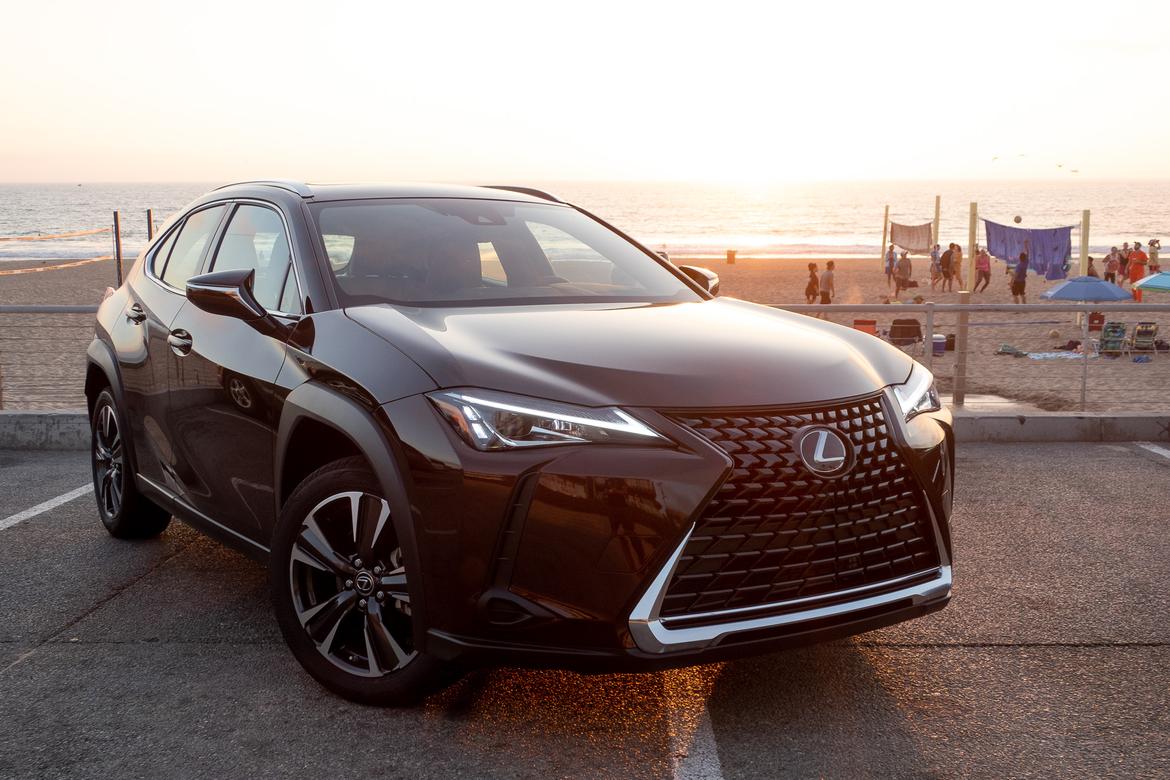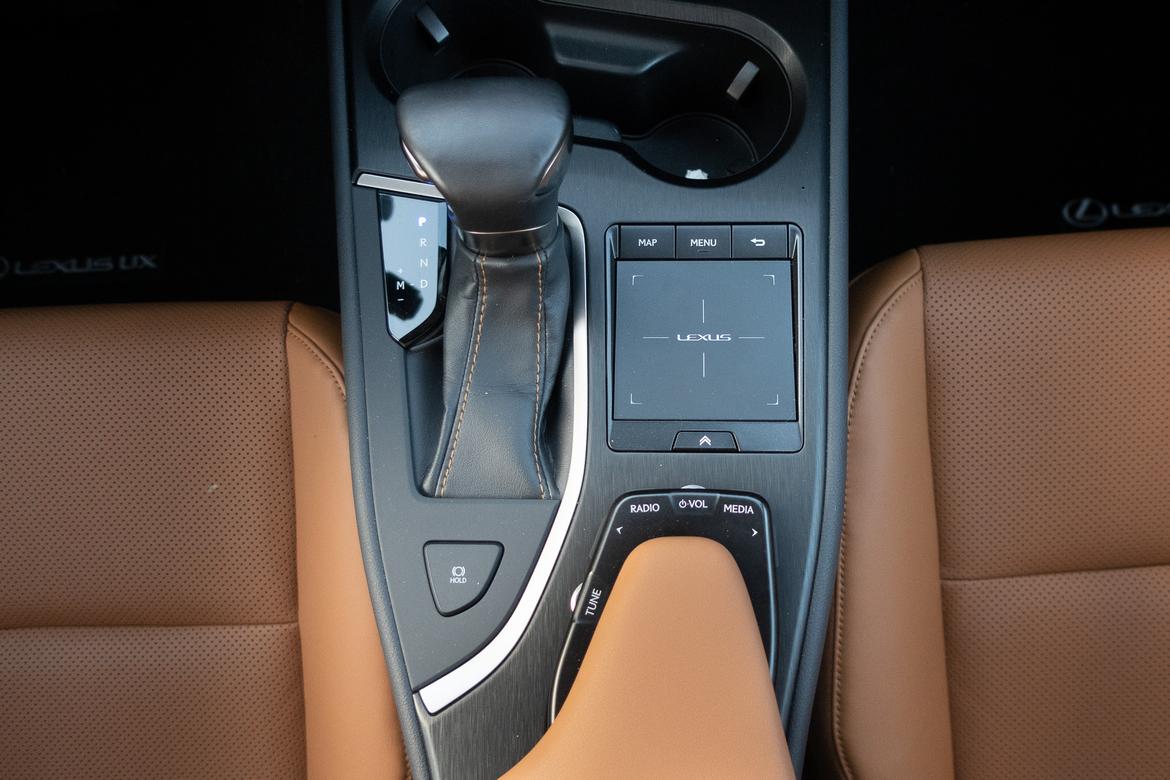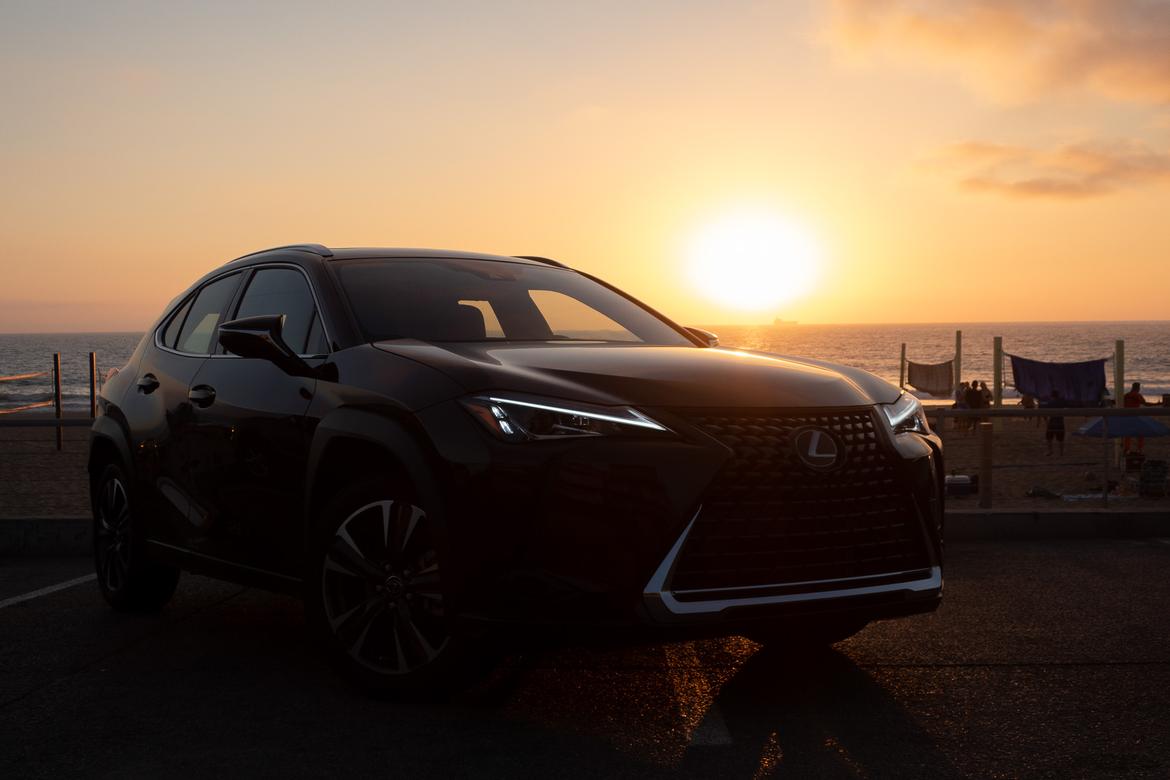The 2019 Lexus UX 200 subcompact SUV arrives with some intrigue. It's the first Lexus vehicle using parent company Toyota's new Global Architecture Compact (GA-C) platform, shared with the Toyota Prius and Toyota C-HR, and has a few multimedia additions we've been clamoring for from Lexus, including Apple CarPlay and Amazon Alexa integration.
At its introduction during the 2018 New York International Auto Show, the UX had a surprising amount of headroom, promising cabin materials and updates to Lexus' control scheme to make the system more manageable, even though the notorious touchpad was still involved. And then over the summer, we found out the UX undercuts much of its class on starting price, offering a comprehensive suite of standard safety features that competitors like the BMW X2 or the Audi Q3 don't.
Many of these initial positives were born out in my testing of the 2019 UX 200 in Southern California. But what stood out more was what the small SUV was missing: In a strange twist of fate, a vehicle named "UX" seemed to be lacking a good user experience.
Usually, user experience has more to do with technology or websites and the process of designing them to be attractive and easy to use. But for a car, I'd say user experience refers to how a car drives, how easy it is to use the various features, and how well it all gels together — and on those fronts, the UX falls short.
It's Not Fast, Nor Fun
2019 Lexus UX 200; Cars.com photos by Brian Wong
The UX 200's modest powertrain is a 169-horsepower, 2.0-liter four-cylinder engine that makes 151 pounds-feet of torque, mated to a continuously variable automatic transmission. I tested a UX 200, which only comes with front-wheel drive and Lexus-estimated fuel-economy ratings of 29/37/33 mph city/highway/combined. Those interested in an all-wheel drive UX must opt for the hybrid, the UX 200h, which gets an estimated 41/38/39 mpg.
The good news is that the engine takes regular fuel, which is not common in the luxury world. The bad news is that the performance falls on the wrong side of regular, which erodes the rest of the experience. Lexus lists the published zero-to-60-mph time for the UX 200 at 8.9 seconds; for context, that's almost a full second slower than the zero-to-60 time we tested in our 2017 Chrysler Pacifica minivan. The direct competition is also faster: The 2018 BMW X2 makes the same sprint in 6.3 seconds, and in the 2018 Mercedes-Benz GLA250, it's 7.2 seconds.
This translates to a driving experience that doesn't feel luxurious. While the UX doesn't feel especially slow in everyday driving, it takes a beat for the vehicle to get up and go. There's a reason many luxury cars have powerful engines: Having plenty of power at your disposal makes for a more premium driving experience over a less expensive, non-premium product.
The new platform feels more solid than the slightly larger Lexus NX and does a good job at smoothing road imperfections. The UX also does an above average job sealing out road and tire noise — but not engine noise, which drones when the 2.0-liter is at higher rpm. The overall competence of the chassis is not the limiting factor for the UX, it's the steering. A lack of feedback from the wheel numbs what fun you can have; when pushed, the UX pushes back as if to say, "Are you sure about that?"
That Darn Touchpad
Cars.com photo by Brian Wong
Our disdain for the Lexus multimedia experience is well-documented, but the UX makes it a bit better. The first is added connectivity features, including Apple CarPlay and Amazon Alexa. The optional center dashboard screen is also a plus at 10.25 inches wide and mounted up high for easy visibility. I thought it might be too big at first glance, but it's wider than it is tall, so it does a good job of staying out of the way of sight lines, yet is still big and sharp enough to be easily read.
The new set of controls at the base of the center console armrest is less of a positive, but I think it can be adapted to. I tested the UX 200 for about a week, and I got quicker at switching stations, adjusting the volume and changing audio sources. The ergonomics of it are also good; your hand falls there naturally when driving.
However, those buttons don't control everything. Functions like setting destinations or navigating through the menus on the screen still require the touchpad, and the placement of those controls pushes the touchpad forward. The touchpad hasn't gotten any better; it's still very hard to use while driving and makes operating the screen a chore. Overall, the UX is a step forward multimedia-wise for Lexus, but there's still work to be done.
Interior Thoughts
2019 Lexus UX 200; Cars.com photos by Brian Wong
The UX had a bit less room than I remembered. If the driver is tall, rear legroom is quickly compromised, though headroom is better than the UX's shape suggests. It's quite a narrow car, so fitting three adults across the backseat will be hard due to a lack of shoulder room. Sitting in the middle seat, my shoulders spilled into the side seats, and I apologized to the imaginary person I was squeezed in with.
The UX I tested had the Luxury Package with features including heated and ventilated front seats and a hands-free power liftgate, but it had one strange omission: leather upholstery. The Luxury Package sticks with Lexus' imitation leather for the seating surfaces, which are some of the best in the business, plus they were ventilated, which prevented them from getting sticky even on an 80-plus-degree day.
Visibility at certain angles is difficult. The back window is large enough, but the blind spot to the passenger side can fully hide another vehicle. Forward visibility is fine for driving, but the sharp drop off of the hood means you can't see the nose even with the seat raised up. Lexus offers a set of parking sensors for the UX; that would probably be an option box I'd check.
The Price Is Still Right
None of the UX's drawbacks are deal-breakers, and the small SUV has appeal with significant value in its class. Its standard Lexus Safety System Plus 2.0 comes with adaptive cruise control, lane keep assist, automatic forward emergency braking, road sign assist and automatic high beams.
Even though we don't have full pricing information on the UX yet, it's still safe to say that the UX will undercut the competition by a fair margin based on the standard feature set and what was added in the Luxury package model I tested. The UX starts at $33,025, including destination, and the model I tested was $40,425 after adding navigation with the larger screen ($2,200) and Luxury Package ($5,200).
Cars.com photo by Brian Wong
The question is, will that emphasis on value translate in this class? While driving the UX 200, I recalled the 2018 BMX X2 I tested earlier this year. It, too, is a small luxury SUV with compromised sight lines and a shape that feels like a tall hatchback. But the X2 is leaps and bounds ahead of the UX dynamically, as was its price — the X2 I tested cost $50,920 and was lacking many of the Lexus' standard safety features.
Those expecting the UX to follow in the footsteps of the NX and RX won't be disappointed; it's more of the same in that regard. But for those of us hoping that the UX would be more revolutionary from a dynamic and technology perspective, it does leave you wanting.
The 2019 UX 200 goes on sale in December, with the UX 250h following in January.
Source: Read Full Article



